gboneu
Harmless

Posts: 30
Registered: 12-5-2015
Member Is Offline
Mood: No Mood
|
|
Cuprous chloride synthesis (FeCl3 method)
Hello to everyone:
Ok so here goes a method of synthesising Cuprous Chloride (CuCl) using Iron trichloride.
2FeCl3 + 2Cu = 2FeCl2 + 2CuCl
iv'e did the reaction 2 times, the second one i used 60 gr of copper (wire and pipes) and 300 gr of Iron trichloride with is 48% (Of that is what it
says ) If the porcentage is correct the amount of copper to use is 56.4 gr and the theorical iron trichloride is 144 gr in 300 gr of the solution.
i've set for reflux and reflux it for 3 and 1/2 hours
While the reflux is going on the red-yellow color of the iron trichloride is turned into a green color and when the green color doesn't get lighter
then the reaction is done. Before the reflux was started i've added some hydrochloric acid (10 ml of 15% ) This is not necessary, but it speed thing
up a little bit.
When the reflux was stopped i got a 2l RBF with 1250 ml of cold water and added the reaction to it, Immediately cuprous chloride was precipitated and
got very quickly to the bottom of the RBF. The solution was a light green blue color.
The top solution was decanted out, and the cuprous chloride was vacuum filtered. The cuprous chloride was wash twice with distilled water and then
with EtOH. And when was more or less dried it was transferred to a pre-weight container and yield was calculated to be 78.6% from starting copper,
since from the original 60 gr, 13.5 gr were recovered so 46.5 gr of copper were consumed in the reaction.
57 gr of white cuprous chloride was collected and store in a plastic bottle for storage.
The process is efficient and economical, however the final product is contaminated with traces of iron oxides and chlorides. I've tried to do some
purifications and found that it can be recrystallized, but i have to do some more experiments before i can get these to work wel. When i have the
results i will post the topic for purification and how to test the purity of the product. Now the iron Chloride waste can be used to make useful iron
oxalate by adding oxalic acid directly and you then discard the solution which is more safe than the iron chloride itself. ok thats all, i hope you
find these useful. Greetings from Cordoba-Argentina 
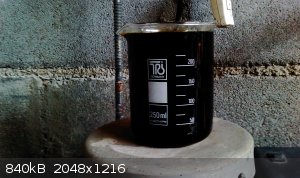 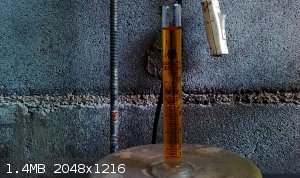 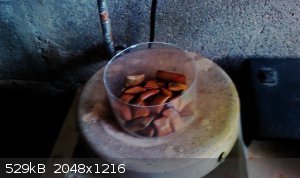 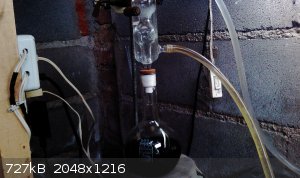 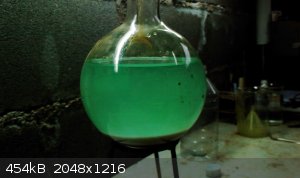 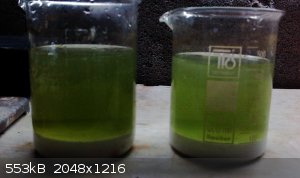 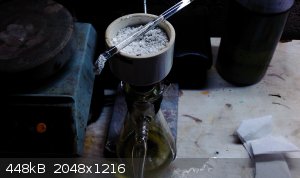 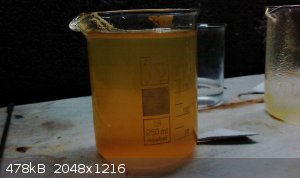 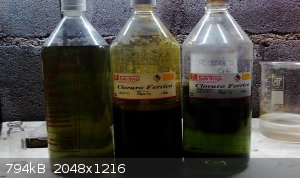 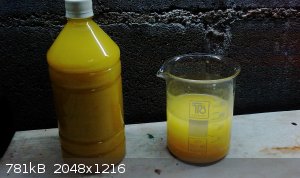
|
|
|
Fantasma4500
International Hazard
    
Posts: 1677
Registered: 12-12-2012
Location: Dysrope (aka europe)
Member Is Offline
Mood: dangerously practical
|
|
Cu(I)Cl from CuO
just found out today that after reducing CuO using NaOH/glucose, boiled some hours
the Cu2O reacted with HCl and then diluted affords CuCl effortlessly
my method prior was CuCl2 + HCl + ascorbic acid and diluting rapidly in icecold water
|
|
|
andyloris
Harmless

Posts: 49
Registered: 22-9-2022
Location: France
Member Is Offline
Mood: Lazy
|
|
I think you can achieve the same results using Copper(II) chloride instead of Iron(III) chloride.
Cu + CuCl2 → 2 CuCl
Always trust your first idea, especially if you only have one.
|
|
|
unionised
International Hazard
    
Posts: 5104
Registered: 1-11-2003
Location: UK
Member Is Offline
Mood: No Mood
|
|
Salt water, copper sulphate (or chloride or whatever) and sodium metabisulphite also works to make CuCl.
|
|
|